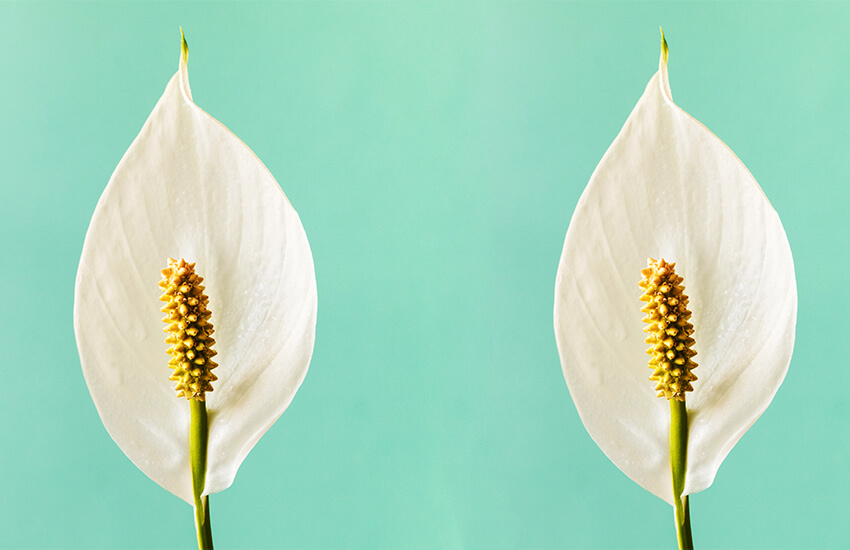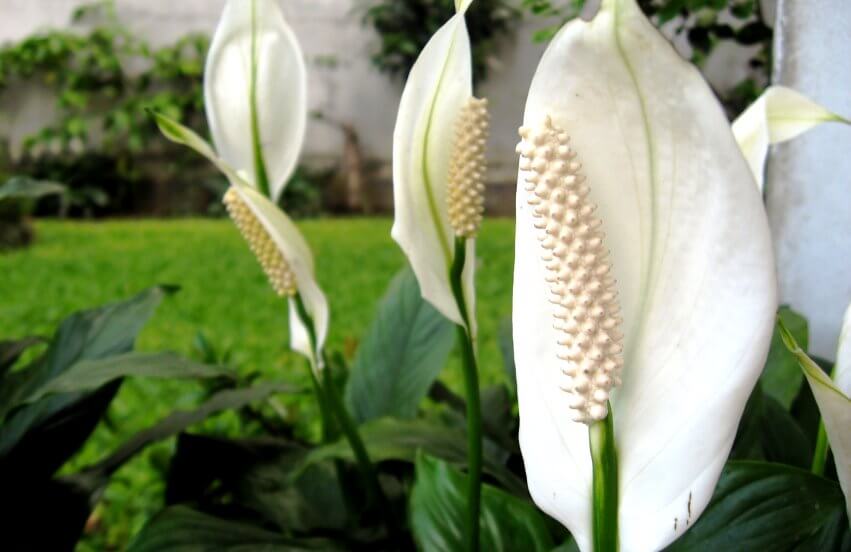Spathiphyllum, commonly known as the Peace lily, is a popular houseplant. It is an excellent air purifier and is simple to grow. In the ideal living environment, peace lily roots can breathe easier, thrive, and absorb more water and nutrition. As a result, if you want to keep your peace lily healthy inside your home, you must provide a proper type of soil mix for this plant.
Some factors must be considered while creating a soil mix for Peace Lily plants. This article will review these factors and discuss three Peace Lily plant soil recipes.
If you are interested in this topic , you can also read
<<Best soil for African violet>> and <<Best soil mix for ZZ plants>>articles.
Peace Lily Soil Requirements
Soil is an essential component that affects the plant’s health, like water and light. Your Peace Lily plant may experience various issues if you use improper soil mix.
An ideal planting medium for Peace Lilies must satisfy a few things. When selecting the proper type of soil mix for peace lily, you should consider the following aspects:
- Moisture retention
- Drainage capacity
- Soil pH
- Aeration
- Nutrients
Moisture Retention
The soil should always be wet for peace lilies. This plant will remain healthy as long as the roots have access to enough water. Your peace lilies will be able to produce their stunning white flowers and glossy leaves in wet soil.
But you should exercise caution. Too much moisture can cause the soil to become soggy, which can cause the leaves to turn brown.
Drainage Capacity
Peace lilies do best in moist, well-draining soil. Water your peace lily and allow the water to run off the plate through the drainage holes.
It is better to rewater the soil once the top layer is completely dry. In this manner, the soil will remain wet but not waterlogged.
Soil pH
Peace lilies favor slightly acidic soils. The root system cannot get the nutrients in too acidic or alkaline soil. Your peace lilies will flourish if you keep the soil pH between 5.5 and 6.5.
ُSource: Tahmid Munaz
Aeration
Before watering the soil, it is vital to stir it occasionally and allow the air to circulate. Loosening the soil improves water dispersion and maintains soil moisture.
Your peace lily’s soil should be easy to aerate. The best way to do it is to use a chopstick to make a few holes in the soil, water it, and then allow the water entirely drain out.
Nutrient-Rich Soil
The soil rich in nutrients would be the best soil mix for Spathiphyllum. This plant grows in soil rich in phosphorus, nitrogen, and potassium. As a result, an ideal soil mix for your peace lilies would be soil mixtures that contain these nutrients.
You might also add fertilizer or Homemade compost to enrich your soil mix for peace lilies.
How To Make The Best Soil Mix For Peace Lily Plants (DIY Recipes)
Peace lilies thrive in nutrient-rich, moisture-retentive soil with good drainage. To suit Spathiphyllum needs, you can pick any light potting mix that contains perlite or pumice and add a small amount of compost. Avoid garden soil since peace lilies do not like heavy soils.
Keep the pH between 5.6 and 6.5 since peace lilies prefer slightly acidic soil. It is recommended to utilize peat moss to increase the soil’s acidity. You can also use lime to lessen the acidity if your pH meter indicates a reading of less than 5.6.
The following are some recipes for making the best soil mix for peace lily plants:
DIY Recipe 1:
You can mix these components:
Use a container to combine 1 part sand, 1 part loam, and 1 part peat moss.
Sand helps the soil drain better, whereas loam aids in moisture retention. Peat moss can help with the aeration of peace lily soil mix. The three essential elements that the peace lily requires are therefore balanced in this recipe.
DIY Recipe 2:
- 5 parts orchid bark
- 4 parts coco coir
- 2 parts activated charcoal
- 2 parts worm castings
- 5 parts perlite
Although this recipe contains too many ingredients, it is the best soil mix for peace lily. Each of these ingredients have a special ole in the soil mix.
- Orchid bark offers ample drainage and aeration in addition to assisting with moisture retention.
- Coco coir enhances water retention.
- Activated charcoal inhibits the formation of fungi like mold. Additionally, it stops pest infestations.
- Worm castings add nutrients and improve soil structure.
- Perlite helps the water drainage.
This soil mixture can be applied to other indoor plants as well.
DIY Recipe 3
- 2 parts regular potting mix
- 1 part sand
- 1 part perlite
This peace lily soil recipe is by far the simplest.
ُSource: Goss Nuzzo-Jones
Pre-Made Potting Soil Mix
If you do not want to put out the effort of creating your own soil mix for peace lily plant, you can still utilize pre-made soil mixtures. Although they might need some sand or perlite to aid drainage, the following pre-made soil mixtures are some of the best Pre-Made potting soil for peace lily plants.
Can You Use Succulent Potting Mix For Peace Lily?
Yes, cactus soil or succulent potting soil can also be used for peace lilies. These soil mixtures have good drainage and aeration.
Although cactus soil is not the best medium for peace lily plants, it meets most of your peace lily’s requirements.
Repotting Peace Lily
No matter how carefully you choose the pot and soil for your Peace Lily, you will eventually need to change the pot and soil. Your plant’s roots will fill up the available area as they grow and begin to get closer together. This may prevent them from getting water and nutrients, harming your Peace Lily plant.
There are many signs that your peace lily is prepared for repotting. For instance, if the roots are visible above the soil’s surface, your plant’s pot has become small for your peace lilies.
In order to understand the time of repotting, slide your plant out of the pot and examine the roots. Your peace lily will need a bigger pot if they are root-bound.
It would be preferable to wait and repot your plant in the spring if it is not severely root-bound. However, you can do the repotting any time of the year if you have a severe case of root bounding.
Repotting also enables soil renewal. Even durable substances like coconut coir and pine bark deteriorate with time. The potting mix becomes less aerated and finer-grained as time goes on.
To repot your plant:
- Turn the pot on its side while firmly holding the plant’s base to uproot your Peace Lily.
- Remove any soil clods sticking to the roots with your fingertips.
- Use fresh soil mix for your peace lily.
Every two to three years, transfer your Spathiphyllum to a larger container. A diameter increase of about 2 inches is enough for each time of repotting.












Great information! I am starting a small nursery of house plants and perennial herbs.
this is of great help. Elizabeth B
thank you for the article i loved it i was just wondering what you mean by loam?
loam is soil with a balanced mixture of sand, silt and clay. Commonly it refers to nutrient-rich, crumbly garden soils that contain organic matter.